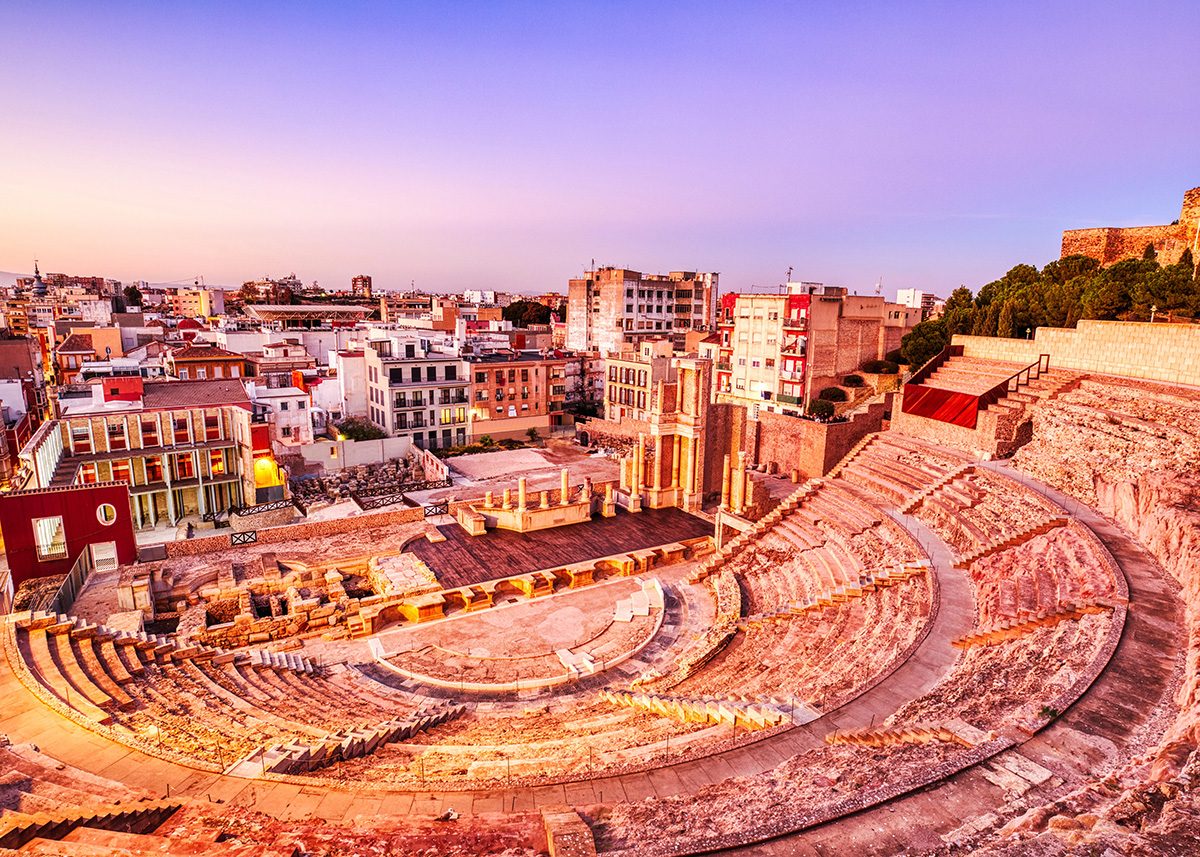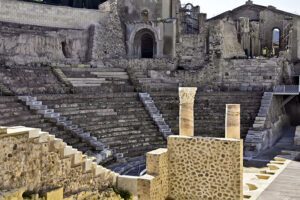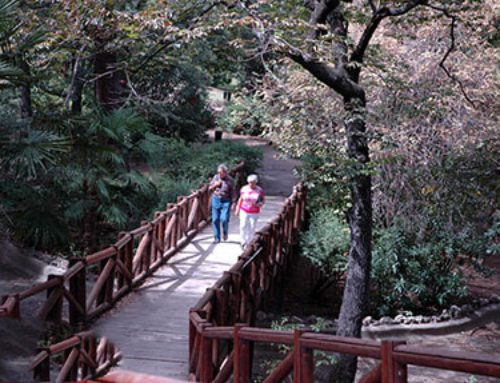“The Unvarnished Traveler” by Brian Raymond
“The Unvarnished Traveler” by Brian Raymond

When travelers hear the name “Cartagena,” their minds often drift to the vibrant coastal city in Colombia. However, across the Atlantic, nestled along Spain’s southeastern coast, lies another Cartagena—one steeped in millennia of history, breathtaking archaeological wonders, and a distinctive Mediterranean allure. Often overshadowed by Spain’s more famous destinations, Cartagena is a hidden gem waiting to be explored.
A City Shaped by Empires
Cartagena, Spain, is a city where history whispers through every street and monument. Founded in 227 BC by the Carthaginian general Hasdrubal the Fair, the city, originally called Qart Hadasht, quickly became a vital military and trade hub. Over the centuries, Cartagena changed hands multiple times, serving as a strategic stronghold for the Romans, Visigoths, Moors, and later the Spanish crown.
Its natural deep-water harbor made it a coveted naval base, and today, Cartagena remains an important port city, blending modern maritime significance with a rich historical past. Visitors can stroll through its streets and feel the layers of history unfold—Roman ruins, medieval fortifications, and Art Nouveau architecture all coexisting in a seamless tapestry of time.
Walking Through Time: Archaeological Wonders
 Cartagena’s greatest allure lies beneath the surface—literally. The city is home to some of Spain’s most fascinating archaeological discoveries, many of which were unearthed relatively recently. The crown jewel of these excavations is the Roman Theatre, discovered in 1988. Built in the 1st century BC under Emperor Augustus, this grand amphitheater once held over 6,000 spectators. Today, it stands as one of Spain’s most impressive Roman ruins, meticulously restored and accompanied by a museum that brings the city’s Roman past to life.
Cartagena’s greatest allure lies beneath the surface—literally. The city is home to some of Spain’s most fascinating archaeological discoveries, many of which were unearthed relatively recently. The crown jewel of these excavations is the Roman Theatre, discovered in 1988. Built in the 1st century BC under Emperor Augustus, this grand amphitheater once held over 6,000 spectators. Today, it stands as one of Spain’s most impressive Roman ruins, meticulously restored and accompanied by a museum that brings the city’s Roman past to life.
Just a short walk from the theatre, visitors can explore the Roman Forum District, where excavations have revealed remnants of ancient baths, temples, and marketplaces. Walking through these ruins, one can vividly imagine the daily lives of Roman citizens who once populated the city.
Another must-visit site is the Augusteum, a temple dedicated to Emperor Augustus, showcasing the grandeur of Roman religious structures. For a deeper dive into history, the National Museum of Underwater Archaeology (ARQUA) offers fascinating insights into ancient shipwrecks and maritime trade routes that shaped Cartagena’s prominence.
An Offbeat Discovery: The Crypt Beneath a Bullring
While Cartagena’s Roman Theatre is well-known, one of its most intriguing discoveries lies hidden beneath the Plaza de Toros (Bullring). Built in the 19th century, this bullring unknowingly sat atop the remains of another ancient Roman structure—an amphitheater dating back to the 1st century AD. Excavations began in recent years, revealing that long before bullfighting, this site hosted gladiatorial combats and grand spectacles for Roman audiences.
The juxtaposition of the two arenas—one modern, one ancient—serves as a striking testament to Cartagena’s layered history. Though excavation efforts continue, visitors can already glimpse sections of the Roman amphitheater and imagine the echoes of battles fought beneath the Mediterranean sun.
A Taste of Cartagena’s Unique Culture
Beyond its archaeological treasures, Cartagena offers an atmosphere that is distinctly Mediterranean. A stroll down Calle Mayor, the city’s main pedestrian avenue, reveals a stunning collection of Art Nouveau buildings, boutique shops, and inviting cafés perfect for indulging in local delicacies.
Seafood lovers will relish Cartagena’s culinary scene, particularly dishes like Caldero, a traditional fisherman’s rice stew, and Mojama, a delicacy made of cured tuna. To truly experience the city like a local, visitors should sip on a Café Asiático, a sweet and strong coffee infused with condensed milk, Licor 43, and cinnamon—a specialty unique to Cartagena.
For a more immersive experience, the city’s annual Carthaginians and Romans Festival is a must-see. Held every September, this lively event reenacts historical battles and cultural exchanges between the two civilizations, complete with parades, costumes, and theatrical performances.
Why Visit Cartagena, Spain?
While Spain’s larger cities like Madrid, Barcelona, and Seville often steal the spotlight, Cartagena offers an experience that is equally enriching yet refreshingly undiscovered by mass tourism. It is a place where history is not just preserved but woven into daily life, where you can wander among Roman ruins one moment and enjoy fresh seafood by the waterfront the next.
For history enthusiasts, archaeology lovers, and travelers seeking an authentic Spanish experience, Cartagena delivers in spades. Whether exploring underground ruins, marveling at centuries-old architecture, or simply soaking in the Mediterranean charm, Cartagena invites you to step into a past that is still very much alive.
So next time you hear “Cartagena,” remember that Spain’s version holds just as many treasures—perhaps even more, for those willing to uncover them.
So how to choose the right vacation for you?
Vacations are an investment! With literally thousands of options, choosing the right vacation and the best value is difficult to sort through. That’s where I bring my 12 years of travel experience and expertise to do this right, and get you the best value for your money. With the backing of the largest travel consortium behind me, we have options you can’t find online. Plus our work just gets started once we book your dream vacation. Chat with us to learn more.
The world awaits you and we look forward to assisting you in choosing the exact right adventure on the waters or land for you and your companions!





